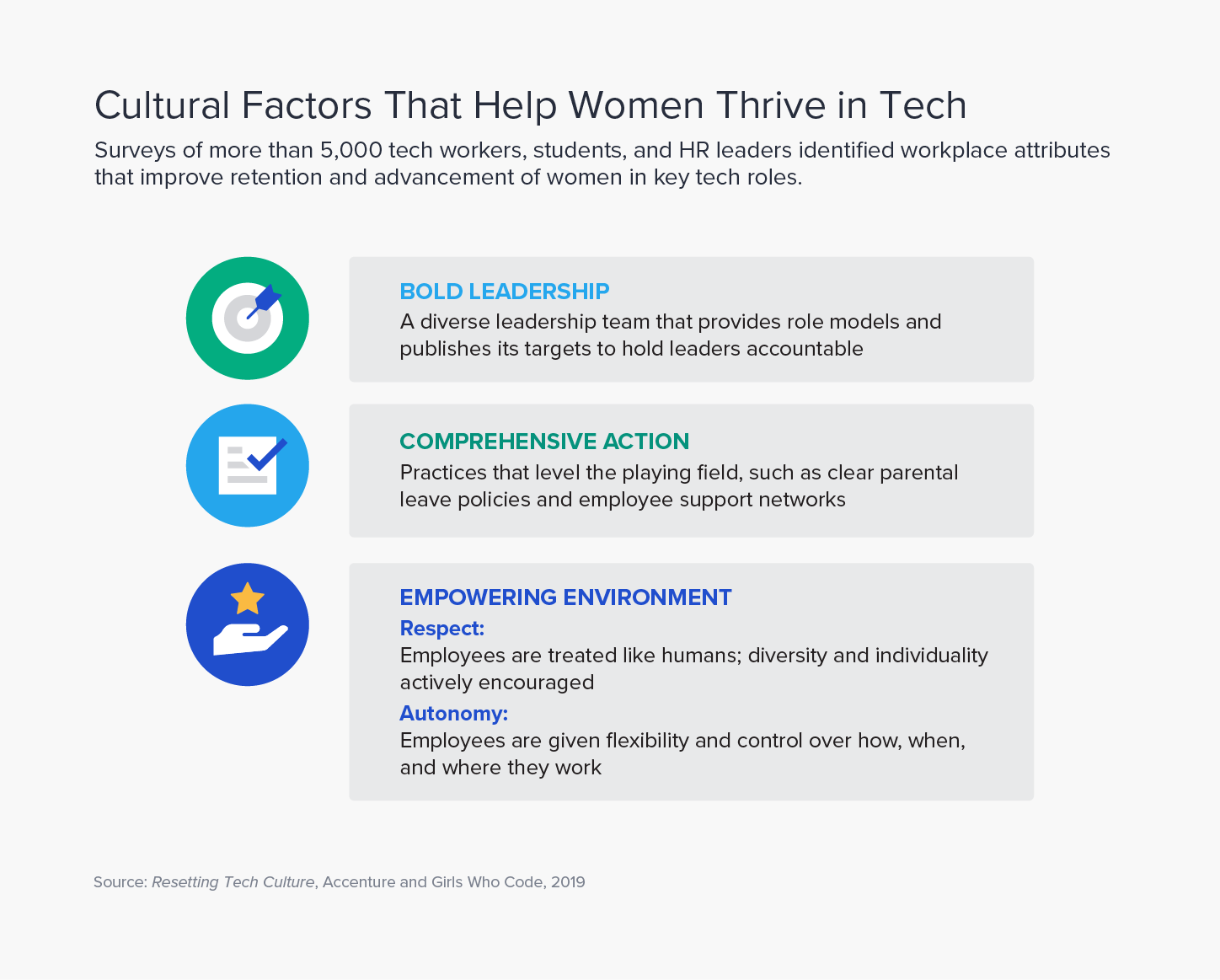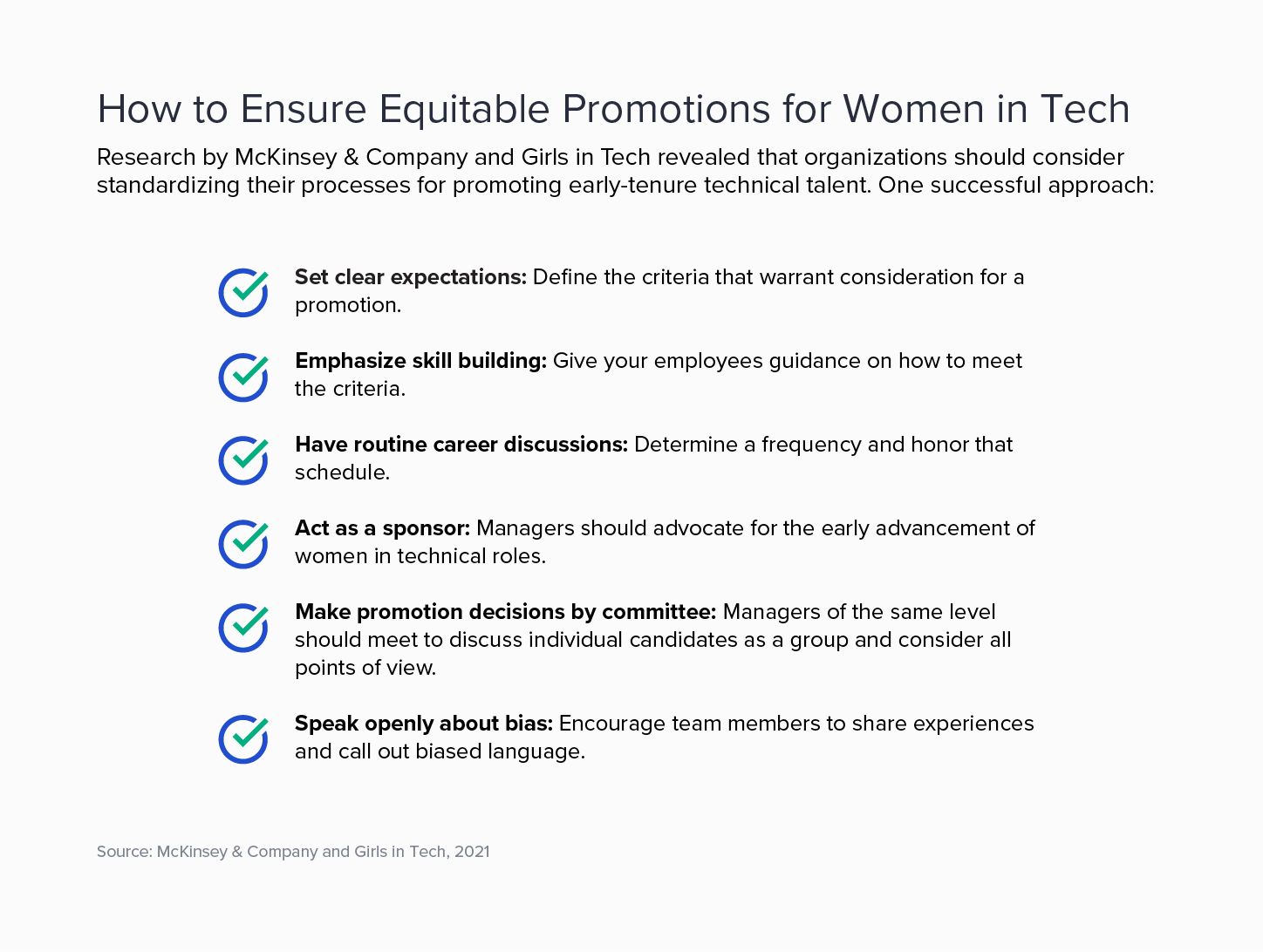3 Ways Companies Can Narrow the Gender Gap in Technology
authors are vetted experts in their fields and write on topics in which they are extremely knowledgeable. All of our content is peer reviewed and validated by world-class professionals.

Featured Experts
Women are making gains in the tech workplace. Deloitte Global research found that women’s presence in the global tech industry overall increased 6.9% from 2019 to 2022, and their occupation of technical roles increased by 11.7%. But gender inequality in the industry is a persistent problem. HR experts say companies must act boldly to attract, hire, and retain more women in the field.
“I would challenge the HR leadership of companies around the world to say, ‘If we just keep doing the same thing, we won't make progress at the rate that we need to make it,’” Christy Pambianchi, Executive Vice President and Chief People Officer at Intel, tells Staffing.com.
Several large tech companies have established clear goals. Intel intends to increase the representation of women in technical roles to 40%. HP aims to achieve 50/50 gender parity by 2030.
Below, leading HR executives offer ways any company can narrow the gender gap in technology.
Double Down on Efforts to Avoid Bias in Hiring
Most technology companies endorse unbiased hiring and inclusion training: A 2021 report from the women’s tech advocacy group AnitaB.org found that 83.6% of companies provide training on unbiased recruitment to tech professionals. The same study found that companies that require such training hire 1.2 times more women in tech roles.
Still, unconscious bias persists. Some companies are using AI to avoid bias in their recruiting and hiring practices, but it’s not a magic bullet. “Companies are leveraging AI in today’s recruiting and hiring practices with goal of reducing and eliminating bias,” Suzan Morno-Wade, CHRO at Xerox, tells Staffing.com. “While we use AI at Xerox to help increase our sourcing of women and diverse talent, it’s important to acknowledge that it does bring challenges. What we’ve seen is AI cannot operate on its own. This is the marrying of human judgement and influence, with AI.”
The US Equal Employment Opportunity Commission (EEOC) issued guidance in May 2022 on the use of algorithmic software in hiring practices. While the recommendations are aimed at eliminating discrimination against people with disabilities, they may serve to reduce bias for other marginalized groups—including women. For example, the guidance includes the recommendation that private companies and the federal government use algorithmic tools only to assess the abilities or qualifications that are truly necessary for the job.
Offer Work-life Balance Policies That Benefit Women
The last few years have taken a toll on families in general and women professionals in particular. In a 2021 report, TrustRadius found that 42% of women in tech took on more household work during the COVID-19 pandemic compared to 11% of men.
Instituting fair work-life balance policies, such as offering generous paid family leave, normalizing a man’s role as a caregiver, and creating an environment where women are judged on their performance, not their work schedule, would improve workplace culture for women.

Advance Women Throughout Their Careers
The tech workplace needs to allow women to thrive—or companies risk losing talented employees. A joint Accenture/Girls Who Code survey of over 5,000 students, tech employees, and senior HR leaders found that many women in STEM and tech careers decide to leave the industry because of dissatisfaction with job roles and a lack of diversity.
They also resign because of discrimination and harassment. Forty-five percent of women in technical fields reported being sexually harassed at work, according to McKinsey & Company and LeanIn.org’s 2022 Women in the Workplace survey of 40,000 women.
To understand why attrition rates were higher among underrepresented groups at GE Gas Power, the company held roundtable discussions, Chief Diversity Officer Tanya E. Spencer tells Staffing.com.
“We decided to have what we call ‘You Matter’ conversations,” with employees who were considering leaving. “We asked them, ‘What are the challenges you're experiencing? What's working well?’ And then we use all of that to develop additional actions,” she explains, pointing to increased exposure to opportunities, mentoring, and stretch assignments.
Nearly two-thirds of women see no clear path to advancement or improvement within their tech careers, and women are also four times more likely than men to consider gender bias a barrier to getting promoted.
Setting up women for success in the formative stages of a career can pay off with greater success further up the career ladder, McKinsey & Company research has found. Failure to do so may leave women unprepared to take on senior roles when opportunities arise.

To better support women in technology roles, companies must institute a process that eliminates bias in promotions, McKinsey says. The process should also focus on development and guidance toward career goals, with mentors suggesting career paths that provide equal opportunities to develop skill sets.
Focusing on career development is one of the keys to attracting and retaining more women in tech. But efforts to provide more equitable access to tech jobs need to start even earlier than the hire date. Encouraging more girls and women to pursue STEM education and tech jobs is a critical first step. Several nonprofit organizations, such as Association for Women in Science (AWIS) and Girls Who Code, do so by supporting students and early-career tech professionals with educational programs, connections to role models, and networking opportunities.
Positive Signs of Change
Awareness of gender inequality in technology is increasing, and the future looks promising. Although 2022 data is not yet available, Deloitte Global projected that 1 in 4 leadership roles at large global tech firms would be held by women by the end of the year. (Deloitte also predicted that large global tech firms would reach almost 33% overall female representation in their workforces in 2022.)
“The approach to inclusion and diversity is still a journey,” GE's Spencer says. Communicating with staff and consistently seeking solutions to issues like high attrition rates among underrepresented genders and ethnic groups, she adds, is “integral to how we work and not an initiative that sits on the side.”
If more tech companies make commitments to hiring, mentoring, and promoting women in the industry, more women will be able to realize their full potential and the gender gap in tech will become old news.



